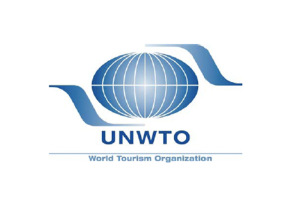UNWTO Barometer: 2010 – Improved prospects in a ‘year of transformation’
January 21, 2010
Posted By: Manolis Psarros
 Growth returned to international tourism in the last quarter of 2009contributing to better than expected full-year results, according to the latest edition of the UNWTO World Tourism Barometer. International tourist arrivals fell by an estimated 4% in 2009. Prospects have also improved with arrivals now forecast to grow between 3% and 4% in 2010.This outlook is confirmed by the remarkable rise of the UNWTO Panel of Experts’ Confidence Index.
Growth returned to international tourism in the last quarter of 2009contributing to better than expected full-year results, according to the latest edition of the UNWTO World Tourism Barometer. International tourist arrivals fell by an estimated 4% in 2009. Prospects have also improved with arrivals now forecast to grow between 3% and 4% in 2010.This outlook is confirmed by the remarkable rise of the UNWTO Panel of Experts’ Confidence Index.- Europe ended 2009 down 6% after a very complicated first half (-10%). Destinations in Central, Eastern and Northern Europe were particularly badly hit, while results in Western, Southern and Mediterranean Europe were relatively better.
- Asia and the Pacific (-2%) showed an extraordinary rebound. While arrivals declined by 7% between January and June, the second half of 2009 saw 3% growth reflecting improved regional economic results and prospects.
- In the Americas (-5%), the Caribbean returned to growth in the last four months of 2009. The performance was more sluggish in the other sub-regions, with the A(H1N1) influenza outbreak exacerbating the impact of the economic crisis.
- The Middle East (-6%), though still far from the growth levels of previous years, had a positive second half in 2009.
- Africa (+5%) was a robust performer, with sub-Saharan destinations doing particularly well.
- Business and consumer confidence has picked up;
- Interest rates and inflation remain at historically low levels and are expected to rise only moderately in the short term;
- A slump is generally followed by a rebound due to pent-up demand and destinations are expected to actively leverage this opportunity;
- There is scope for a revival among source markets which were hard hit in 2009 such as the Russian Federation or the UK;
- Major international events will take place in South Africa (FIFA World Cup), Canada (Winter Olympics) and China (Shanghai Expo), creating potential extra travel demand;
- The momentum of the spirit of cooperation and partnership bred by the crisis is expected to be maintained by stakeholders;
- The flexibility shown by the tourism sector in dealing with rapid shifts in demand and volatile market conditions has made it stronger;
- Crises provide an opportunity to address underlying structural weaknesses and implement strategies fostering sustainable development and the transformation to the Green Economy.
- Unemployment is the key challenge. The jobs crisis is not over yet, particularly in major advanced economies and many valuable human resources are still at risk;
- Economic growth in major source markets, specially in Europe and the USA, is still fragile;
- Stimulus measures are likely to be phased out due to increasing public deficits while a number of advanced economies may see increases in taxation, putting extra pressure on household and company budgets;
- Oil prices remain volatile;
- Although the overall impact of the influenza A(H1N1) virus was milder until now than anticipated, experience from previous pandemics shows that the situation could once again become challenging;
- Security threats and the potential of increased related hassle and costs for travellers are still a challenge;
- Revenues and yields are expected to recover at a slower pace than travel volumes.

COMMENTS